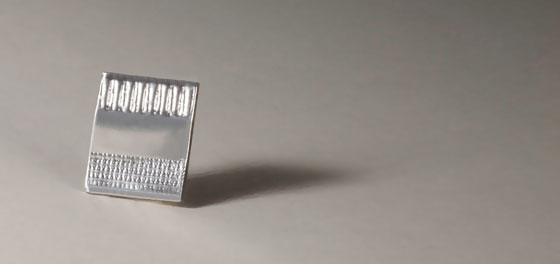
Each year, the EPHJ-EPMT-SMT – the high-precision trade show for companies and professions specialising in watchmaking and jewellery, microtechnologies and medical technologies of which this year’s edition closed on June 21st – turns the spotlight on major innovations in both Swiss and foreign industry. Nominated for the Exhibitors’ Grand Prix alongside five other candidates, Axxios Technology presented its AXS Sensor System.
Designed as a multilayer condenser, the latter acts on the very heart of the material so as to facilitate and accelerate evacuation of vibrations. This extremely simple technique has applications in both sport and industry, a field where this type of patch enables an up to 35% reduction in vibratory energy on machines, a 25% decrease in ball bearing temperatures, and finally a drop in electricity consumption as well as enhanced quality.
Created in Delémont in 2015 and currently employing five people, Axxios Technology exclusively markets AXS sensors, which were developed and are produced in Liechtenstein. As founder and CEO Jacques-Alain Lehmann explains: “The system was initially designed to increase the performance of racing car combustion chambers. It was only afterwards, and quite by chance, that developers became aware of this sensor’s effects on vibrations. The technology has thus been extended to cycling, motorbiking, skiing, golf… and then to industry.”
The AXS sensor acts directly on the atomic structure of matter – whether in a solid, liquid or gaseous state. Once affixed to the machine, engine or sports accessory, this patch modifies its underlying material by influencing magnetic fields. “Generally speaking, vibratory energy has to find its way through a given material”, says Jacques-Alain Lehmann. “By interacting electrostatically, AXS has an effect on the direction of the ions and electrons, which are arranged in certain patterns within the crystalline structure. The result is improved conductivity and accelerated dissipation of the vibrations.” No external energy is required, since the resonance principle is enough to ensure the sensor’s efficiency.
Applied to turning, drilling, milling of cutting operations, this technology eliminates up to 30% of disturbances, a level of performance leading to reduced friction in ball bearings, less mechanical wear, improved component surface finishes and, consequently, a steep drop in scrap rates – up to 40% depending on the machine.
September 13, 2018


 News
News